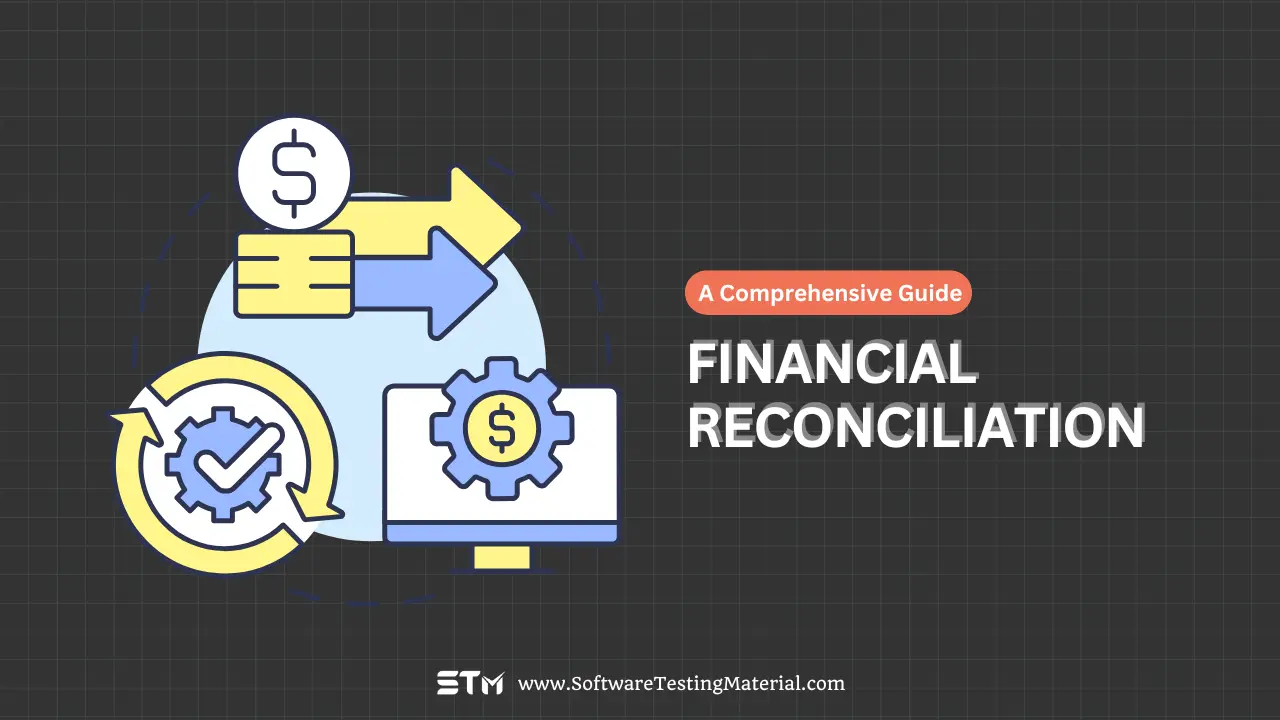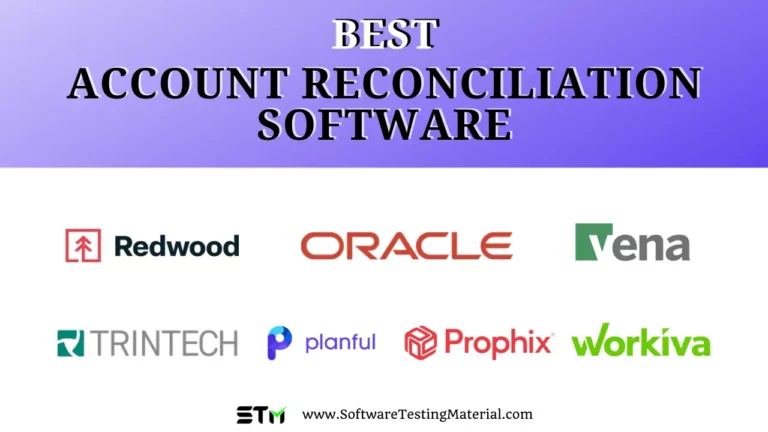Financial Reconciliation: A Complete Guide to Streamline Your Accounting Process
Financial reconciliation is key to having accurate financial records in any business. It’s comparing different financial records like bank statements and internal accounting records to see if they match and find any differences. This helps businesses have accurate records, avoid mistakes and streamline their finances. Simplified reconciliation builds trust in financial management and is vital for budgeting and planning. Understanding and doing reconciliation will lead to better financial decisions and overall business success.
Must read: What is Account Reconciliation

What Is Financial Reconciliation?
Financial reconciliation is comparing your financial records with external records like bank statements to see if they match. It’s a way to check that all your transactions have been recorded correctly and there’s no mistake in your accounts. By doing this regularly you can catch errors or fraud early. It helps businesses and individuals to keep their financial information accurate and up-to-date so they know how much money they have.
What Are the Benefits of Financial Reconciliation?
- Accuracy of Records: Ensures all financial records are correct for making informed business decisions.
- Error Detection: Helps find mistakes or suspicious activities quickly.
- Organized Finances: Makes it easier to manage and prepare for audits and taxes.
- Cash Flow Management: Helps keep track of money, making future planning better.
- Investor Trust: Builds confidence with investors and creditors by updating financial data.
- Financial Stability: Provides a strong base for stable financial health and growth.
How Does Financial Reconciliation Work?
Financial reconciliation is a process of ensuring that your financial records match up with actual transactions. Here’s how it generally works in simple steps:
- Collect Statements: Gather all financial statements from different sources. These could be bank statements, credit card statements, or any invoices and receipts.
- Compare Records: Look at your internal records and compare them against these statements. Check if every transaction in your records is also in the statement provided by your bank or financial institution.
- Identify Discrepancies: If there are any differences, these are called discrepancies. They need to be investigated and understood. It could be due to an error, a missing transaction, or even fraud.
- Make Adjustments: Correct any errors or make necessary adjustments in your records to match the financial statements. This step is crucial to ensure all data is accurate.
- Repeat Regularly: Financial reconciliation isn’t a one-time activity. It should be done regularly to keep financial records precise and trustworthy.
By following these steps, businesses can ensure their financial health is in good shape.
What Are the Different Types of Finance Reconciliation?
There are several types of finance reconciliation that help ensure your financial data is consistent and correct:
- Bank Reconciliation: This involves comparing your company’s bank statements with the company’s ledger to ensure all transactions match. It helps identify errors like unauthorized transactions or missed entries.
- Credit Card Reconciliation: Similar to bank reconciliation but specific to credit card transactions. This ensures all charges made using a credit card are recorded and accounted for in the financial records.
- Vendor Reconciliation: Here, a company checks if the invoices received from vendors match the purchase orders and receipts. This type helps in managing accounts payable accurately.
- Customer Reconciliation: This process involves verifying that the records of customer payments match the company’s sales records. This is crucial for accurate accounts receivable management.
- Intercompany Reconciliation: Used by companies with multiple branches or subsidiaries, this involves ensuring that financial records between divisions align and consolidate correctly.
By understanding and utilizing these types, companies can better control and manage their financial processes.
Importance of Reconciling Your Accounts
Reconciling your accounts is important to keep your financial records accurate and up-to-date. Regular reconciliation ensures your company’s books reflect the true state of your finances. It helps catch errors like incorrect charges or missed payments before they become bigger problems. By finding these discrepancies early you can prevent financial losses and build trust with stakeholders. Reconciling accounts also ensures compliance with legal and regulatory requirements, reduces the risk of audits and penalties. Overall keeping financial records accurate supports better decision making and helps your business grow better.
Finance Reconciliation Process: Step-by-Step
- Gather Documents: First, collect all the necessary financial documents. This includes bank statements, invoices, receipts, and any internal records you have.
- Compare Records: Look at your internal records and compare them to the bank statements. Make sure all the transactions match up. If there are differences, note them down for further review.
- Identify Discrepancies: Carefully go through all the transactions. If you find any discrepancies, such as extra charges or missing payments, highlight them for correction.
- Adjust Records: Once discrepancies are identified, make the necessary corrections in your records. Ensure that the adjustments bring your internal records in line with your bank statements.
- Verify Adjustments: Before finalizing, double-check the adjustments to confirm that everything is accurate. It’s important to ensure that every change is justified and correct.
- Finalize Records: After verifying, update your financial records accordingly. Ensure they now accurately reflect your financial situation.
- Document the Process: Document the reconciliation process with notes on any changes or corrections made. This will be useful for future reference and audits.
- Review Regularly: Make reconciliation a regular task, such as monthly or quarterly, to keep your financial records accurate and up to date. Regular review helps in maintaining healthy financial management.
Finance Reconciliation Best Practices
- Stay Organized: Keep all your financial documents well-organized and easily accessible. Use folders or filing systems to manage your bills, invoices, and receipts.
- Use Reconciliation Software: Consider using financial software to automate many parts of the reconciliation process. This can save time and reduce errors.
- Check Often: Don’t wait too long before reconciling your accounts. The more frequent your checks, the easier it is to catch mistakes.
- Be Consistent: Follow the same steps each time you perform a reconciliation. This will help you maintain accuracy and become more efficient over time.
- Communicate Clearly: If your reconciliation involves a team, make sure everyone understands their tasks and communicates effectively about any issues or discrepancies.
- Maintain Security: Handle your financial documents securely. Always safeguard sensitive information either by using password protection or secure storage methods.
- Seek Help When Needed: If you encounter complex issues, consider consulting with a financial advisor or accountant. Their expertise can provide valuable insights and assistance.
How Does a Business Reconcile Financial Statements?
Reconciling financial statements means ensuring what your business records show matches what’s in your bank accounts and financial transactions. To do this, get all the necessary records, including bank statements, accounting ledgers and receipts. Then compare the amounts and transactions in your records with those in your bank statement to find the differences. Find the discrepancies, which could be unrecorded transactions, bank fees or errors. Once you found the discrepancies, adjust your records by adding, amending or removing transactions to reflect the correct balances. Having accurate financial records will help you make informed business decisions, plan your budget and prepare for taxes. Make this reconciliation a habit to keep your business finances on track.
How Automation Enhances Finance Reconciliation
Automation makes the reconciliation process easier by simplifying tasks and reducing the time to do them. Instead of manually comparing numbers and searching for discrepancies, automated systems can process large amounts of data quickly. They can detect errors and suggest corrections. Human error is less likely to happen in automated process. Automation also ensures consistency in financial reports and makes it easier for businesses to comply with regulations. Overall, automation saves time, improves accuracy and allows businesses to focus on more important tasks.
Common Challenges and Solutions in Finance Reconciliation
- High Volume of Transactions: Large numbers of transactions can make finding mistakes hard.
- Solution: Use software to enter data and check for mistakes automatically.
- Missing or Incomplete Documents: Sometimes receipts or invoices are lost, which causes problems.
- Solution: Regularly update and store documents digitally for easy access.
- Timing Differences: Transactions might show up at different times in the records, causing confusion.
- Solution: Keep a regular reconciliation schedule and set clear rules for when to record transactions.
- Complex Financial Products: Some financial products have complex structures that are difficult to reconcile.
- Solution: Use specialized software that can handle complex calculations and manage these products efficiently.
- Exchange Rate Fluctuations: Changes in currency exchange rates can impact reconciliation for businesses dealing in multiple currencies.
- Solution: Regularly update exchange rate data and use software that automatically adjusts entries for these changes.
Conclusion
In summary, financial reconciliation is a must for all businesses to ensure their financial records are accurate and trustworthy. By knowing the common issues like transaction timing differences, high volume of transactions, missing documents, complex financial products and exchange rate fluctuations, businesses can implement the right solutions like using the right software, having regular schedule and updating documents digitally. These will minimize errors, save time and improve overall financial accuracy and will make way for smoother operations and better decisions.
Related posts:
- Best Account Reconciliation Software
- Best Record to Report Automation Software
- Best OneStream Alternatives & Competitors
- Best Blackline Alternatives & Competitors
- Best FloQast Alternatives & Competitors
- Best Trintech Alternatives & Competitors
- What is Financial Close Process
- What is Account Reconciliation
- What is a Record to Report (R2R)






